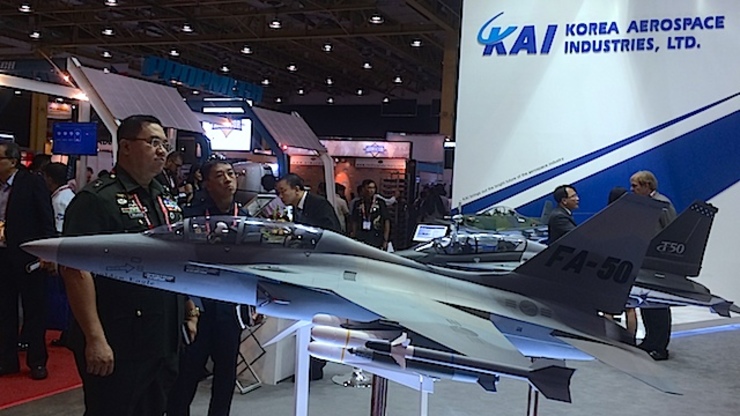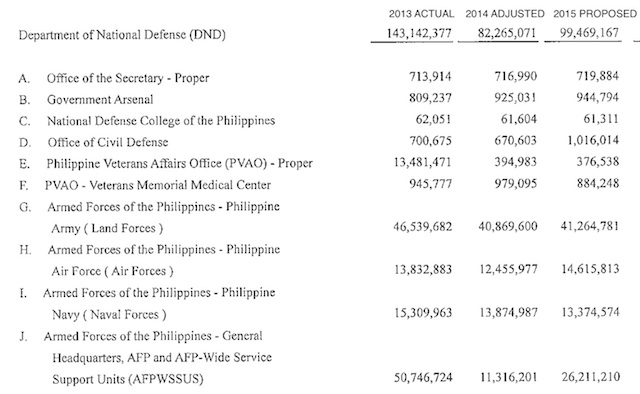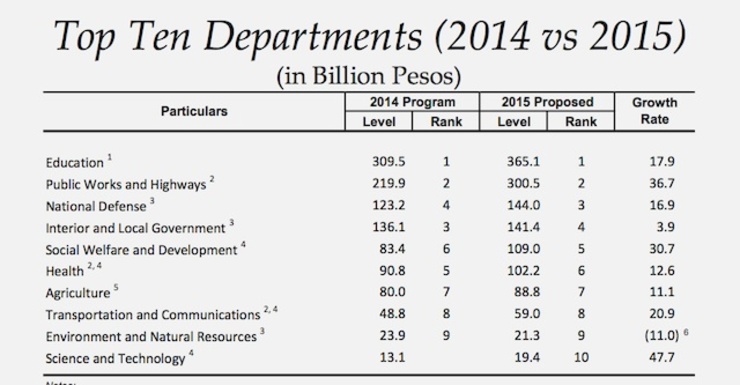Budget Secretary Florencio Abad tells Rappler the proposed law that seeks to redefine savings in the 2015 budget will help fund the shortfall

FA-50: The
The proposed 2015 national budget bill that Malacañang had submitted to Congress funds only a third of the annual P15 billion ($340 million*) that President Benigno Aquino III had committed under the revised Armed Forces modernization law.
The P10 billion ($226
million) shortfall was placed under "unprogrammed" funds, consisting
of items totalling P123 billion ($2.78 billion). These items are not funded but
identified in the budget as those to be implemented once the government finds
additional revenues or if its projected revenue collection is higher than its
estimate.
Budget Secretary
Florencio Abad told Rappler the proposed law that seeks to redefine savings
will be helpful in funding the shortfall. It will allow the continuation of
schemes under the administration's Disbursement Acceleration Program (DAP) that
were declared unconstitutional by the Supreme Court.
"No
guarantees but very likely P10 billion can get obligated by end-2014 as they
have streamlined their processes. Assuming the proposed law on definition of
savings is passed by end of 3rd quarter, enough savings will be available for
its initial funding requirements," Abad told Rappler in a text message.
Unprogrammed
funds are under the budget category Special Purpose Funds (SPF) – tagged by critics
as Malacañang's pork barrel but defended by the government as necessary to give
it the flexibility to respond to unforeseen expenses such as calamity response
and other contingencies.
The SPF accounts
for P501 billion ($11.3 billion) of the total P2.6 trillion ($58.8 billion)
budget for 2015.
Republic Act
10349 or the Revised AFP Modernization Act signed in 2012 commits at least P75 billion ($1.69
billion) over 5 years for the military's modernization. It is funding the
acquisition of a squadron of fighter jets
worth P18.9 billion ($428 million) and two frigates worth
P18 billion ($408 million).
Having one of the
weakest militaries in Asia, the Aquino administration has supported the
aggressive modernization of the military in the wake of growing tension in the
West Philippine Sea (South China Sea) due to territorial disputes among
claimant countries. Previously focused on the Army and insurgencies, the
military is shifting its attention to equipping the Navy and the Air Force to
beef up its defense in the West Philippine Sea .
(READ: State of PH Navy modernization:
'Golden days will return')
Many of these
assets are also useful in humanitarian assistance and disaster response,
another new challenge for the military due to the impact of climate change.
Aquino has
allocated a total P40 billion (about $906 million) to military modernization
since 2010. On top of the funding provided by RA 10349, the military has been a
beneficiary of DAP and Malampaya funds. Both sources were halted by the High
Court, however, resulting in the delay of some small ticket items.
Defense
gets 3rd biggest budget
The modernization
fund is separate from the regular annual operations budget of the Defense
Department and, under it, the 125,000-strong Armed Forces of the Philippines
Territorial
defense and climate change are new threats that the military has to deal with.
Internally, it is responding to a number of threats including the communist
insurgency, Muslim separatists in the southern Philippines
The total defense
budget reaches P115.5 billion ($2.6 billion) if you include the P15 billion
funding required under RA.10349 and further balloons to P144 billion ($3.4
billion if you include the Miscellaneous and Personal Benefits Fund (MPBF) and
the (GPF) and the Pension and Gratuity Fund (PGF). (See tables below)
Among government
departments, defense has the 3rd biggest share of the pie, following education
and public works and highways.
The Department of
Social Welfare and Development (DSWD) is 5th in terms of department share
because the other social services items were separately funded. Social services
get the biggest chunk of the budget – almost P1 trillion ($22.6 billion) or
nearly 40%.

Breakdown of the budget of the Department of National Defense. Screenshot of DBM document

Screenshot of DBM's presentation of 2015 budget to Congress
The AFP headquarters get a big boost from P11 billion ($249 million) in 2014 to P26 billion ($589 million) in 2015.
The table shows a bloated actual budget for 2013 – the year that the military responded to back-to-back major disasters including the Zamboanga crisis, the earthquakes in Bohol and Cebu, and typhoon Yolanda (international name: Haiyan).
In 2015, the Office of Civil Defense (OCD) also gets a boost from P700 million ($15.8 million) in 2014 to P1 billion ($22.6 million).
Among the major services, the Army gets the biggest share as it accounts for about 90,000 of the total 125,000 troops. The Navy has about 20,000 while the Air Force has about 17,000.

No comments:
Post a Comment
Note: Only a member of this blog may post a comment.